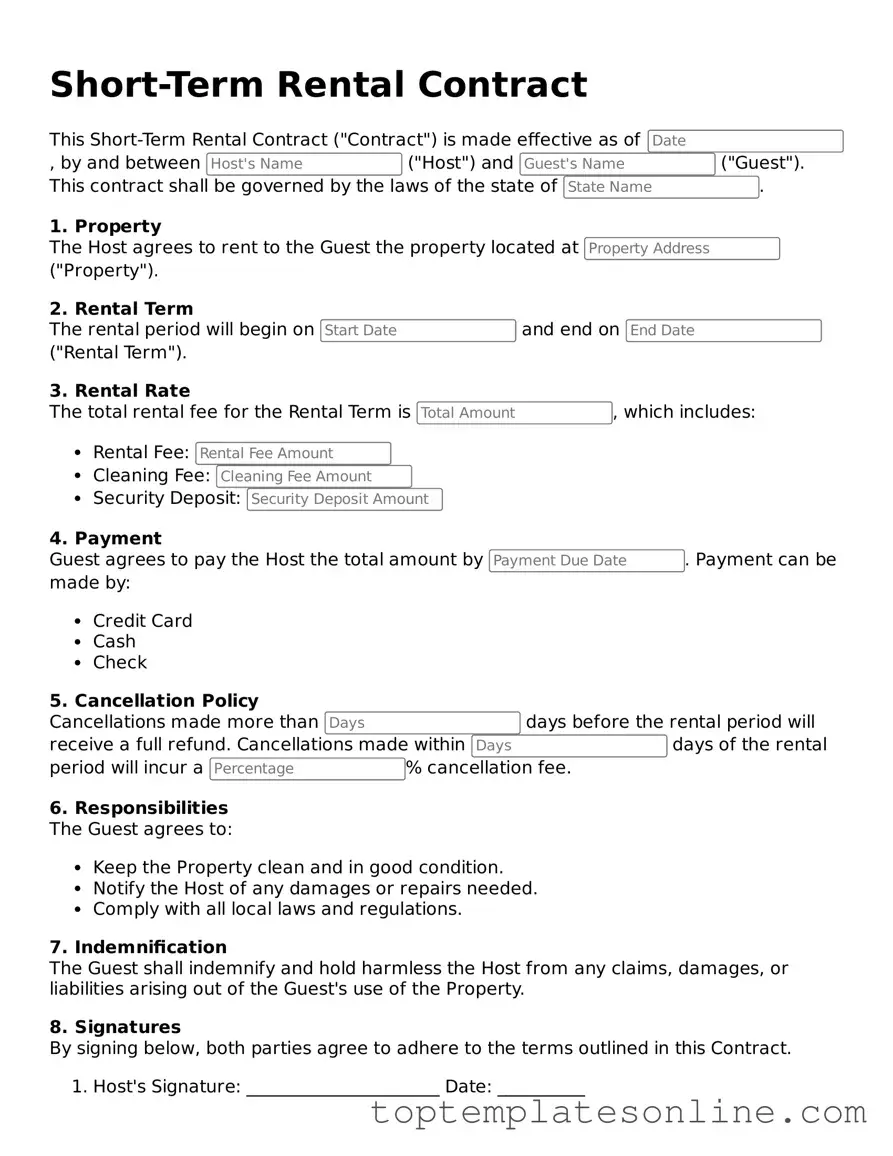Attorney-Approved Short-Term Rental Contract Form
The Short-Term Rental Contract is a legal document that outlines the terms and conditions between property owners and guests for temporary stays. This contract protects both parties by clearly defining expectations, responsibilities, and liabilities. Understanding its key components can help ensure a smooth rental experience.
Customize Short-Term Rental Contract Here
